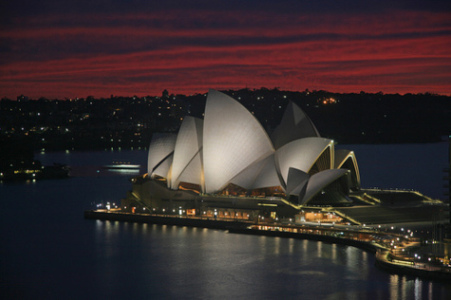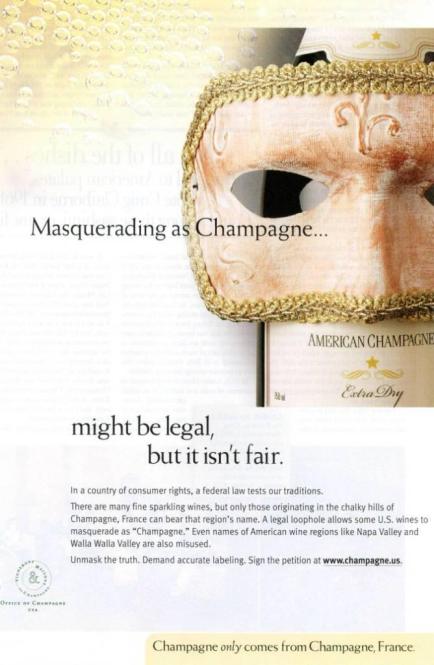Rock and Roll Hall of Fame Redux: Can I Sell My Photo of the Sydney Opera House?
Can I sell my photo of the Sydney Opera House? According to the Sydney Opera House, the answer is no. Australian law professor Peter Black recently posted some nice commentary on this issue in his blog, Freedom to Differ. It seems that photographer/blogger Simon Phipps snapped a great shot of Sydney’s landmark and posted it on iStockPhoto. iStockPhoto rejected it on copyright grounds. Then, the Sydney Opera House weighed in, asserting his publication and sale of the photo would violate its trademark rights as well.

The Disputed Photo
Here’s how the Sydney Opera House explained it:
“The SOH brand is a very powerful brand and is well recognised all around the world. This means that the brand is one of the most important assets of the Sydney Opera House Trust. The Sydney Opera House Trust manages the use of Sydney Opera House’s image and brand on behalf of the New South Wales Government. The Trust vigorously protects the commercial exploitation of its intellectual property and does not approve use of the SOH brand in commercial contexts where there is no association between the relevant business and SOH.
“The Trust does this for two reasons - first - to protect the integrity of the brand and second, to protect its commercial value. As a non-profit arts organisation, the Trust is heavily reliant on sponsorships to support its operations and it offers brand association to sponsors of a certain value. In all cases however a sponsor is only permitted to link its product with the SOH brand in a manner that is approved by SOH and which aligns with SOH brand values.”
I’ve got to say, this is a pretty nice explanation as far as cease-and-desist-type letters go. However, it may be wrong on the law. Prof. Black argues the image not only is not protected under Australian copyright law, but it’s probably not protected under Australian trademark either. He writes: “In my opinion, this is a very tenuous assertion and the SOH would struggle to establish that a third party taking a photograph and then selling that photograph would give rise to such an association as I don’t believe that it would be a commonly held assumption that you would need the permission of the SOH to take a photograph of the SOH.”
I’ll happily defer to Prof. Black on Australian law. However, he’d probably be right under United States trademark law. The leading case here is Rock and Roll Hall of Fame and Museum, Inc. v. Gentile Productions, 134 F.3d 749 (6th Cir. 1998), in which the Sixth Circuit doubted that a photograph of Cleveland’s iconic museum could even serve as a a trademark in the first place. It concluded:
“[W]e believe that the district court abused its discretion by treating the ‘Museum’s building design’ as a single entity, and by concomitantly failing to consider whether and to what extent the Museum’s use of its building design served the source-identifying function that is the essence of a trademark. As we have noted, we find no support for the factual finding that the public recognizes the Museum’s building design, in any form, let alone in all forms, as a trademark. In light of the Museum’s irregular use of its building design, then, we believe that it is quite unlikely, on the record before us, that the Museum will prevail on its claims that Gentile’s photograph of the Museum is an infringing trademark use of the Museum’s building design.”
Ninth Circuit Hears Appeal of Jimi Hendrix Right of Publicity Case
On June 5, the Ninth Circuit heard the appeal filed by Experience Hendrix, LLC, and Authentic Hendrix, LLC, over who controls deceased rock musician Jimi Hendrix’s publicity rights, The Seattle Times reported today. The principal order on appeal is whether Western District of Washington Judge Thomas Zilly erred in 2005 when he found that the issue should be decided under New York law. Judge Zilly found that at the time of Mr. Hendrix’s death in 1970, New York had a limited right of publicity and did not recognize claims made by celebrities’ heirs based on that right. Therefore, he found the sole heir to the Hendrix Estate had no publicity right to assign to the plaintiffs in the case.
STL discussed the order here, and a recent lawsuit over the use of Mr. Hendrix’s name and likeness used in connection with a new line of vodka here. STL will report back when the Ninth Circuit renders its decision.
The district court cite is Experience Hendrix LLC v. The James Marshall Hendrix Foundation, No. 03-3462 (W.D. Wash.). On appeal, the case is No. 05-36029 (9th Cir.).
STL updated this post on June 8 at 7:21 a.m. to correct an error.
Why Don't More Ad Campaigns Address Proper Trademark Use?
Here’s an ad from the Vignerons & Maisons of Champagne, instructing consumers that “Champagne only comes from Champagne, France.” Apparently, some American wineries are selling their sparkling white wines as “champagne” — and are allowed to do so — which irks their French competitors. It’s a nice campaign. But, it raises some questions: if conditioning consumers to use trademarks properly is truly important, and is truly effective, why don’t we see more ads like this one? Do consumers not need much help these days in avoiding the generic use of trademarks and making the proper use of certification marks? Or are such ads ineffective? Or are they just a low priority for trademark owners?

Microsoft Stepping Up Lawsuits Against Counterfeiters
Last week, I wondered whether the spate of default judgments Microsoft Corp. seems to be getting against counterfeiters means it’s increasing its enforcement efforts, or whether I’m simply paying more attention. Upon closer inspection, it looks like Microsoft indeed is getting more aggressive.
In a decidedly unscientific study, I compared Westlaw-reported cases involving trademark law issues in which Microsoft was a plaintiff from January to May 2007 to the same period a year earlier. I then weeded out the decisions that did not result in a final order. That left seven decisions in 2007 and two decisions in 2006. Interestingly, all nine decisions involved allegations of counterfeiting or the unauthorized sale of Microsoft software.

Perhaps Microsoft is now seeking easy prey. During the first part of 2007, Microsoft won each of its cases by default: Microsoft Corp. v. Wubena, No. 06-2209, 2007 WL 656688 (N.D. Ga.) (Feb. 28); Microsoft Corp. v. Raven Technology, Inc., No. 06-1346, 2007 WL 809682 (M.D. Fla.) (Mar. 15); Microsoft Corp. v. McGee, No. 06-611, 2007 WL 1469397 (S.D. Ohio) (May 18); Microsoft Corp. v. Gordon, No. 06-2934, 2007 WL 1545216 (N.D. Ga.) (May 24); Microsoft Corp. v. Coppola, No. 06-06701, 2007 WL 1520964 (N.D. Calif.) (May 24); Microsoft Corp. v. Ricketts, No. 06-06712, 2007 WL 1520965 (N.D. Calif.) (May 24); and Microsoft Corp. v. Butcher, No. 06-371, 2007 WL 1567605 (E.D. Tex.) (May 30).
During the first part of 2006, Microsoft’s two wins came not by default but on summary judgment: Microsoft Corp. v. Sellers, No. 04-353, 411 F. Supp.2d 913 (E.D. Tenn.) (Jan. 26); and Microsoft Corp. v. Suncrest Enterprise, No. 03-5424, 2006 WL 1329881 (N.D. Calif.) (May 16).
Microsoft’s biggest award occurred in its 2007 suit against Mark McGee in which it obtained $710,000 in statutory damages under the Lanham and Copyright Acts, plus $3,569.50 in fees and costs. Its best haul in the first part of 2006 was in its suit against Samuel Sellers in the amount of $460,000, with an additional, undetermined award of fees and costs.
Its biggest disappointment: the recent case of Microsoft Corp. v. Coppola, in which Microsoft sought $3.2 million in damages but was awarded only $14,000. Microsoft also sought $3,050,000 in Microsoft v. Ricketts but received only $12,500. Both awards came on the same day from the judge, Northern District of California Judge William Alsup.
Probably more important to the company than damages, however, was the fact that Microsoft obtained an injunction in each of the nine studied cases.
Note: STL updated this post on June 5 at 9:08 a.m. to correct an error.
Week in Review: Domain Warehousing, Arrested Spammer, and New Blogs
Here’s a motley collection of things I didn’t get around to posting about in the last week.
The Canadian Trademark Blog points out an interesting article on Vanouverite Kevin Ham and the business of domain warehousing.
TM Branding Cap has a new look and a nice link to a musician’s checklist for legal issues to consider when times are good, so band members can weather the storm when times are bad. Kudos to Alvin Borromeo on the new site. But I gotta say, I kind of miss the bears at the Columbus Zoo.
The Seattle Post-Intelligencer reported that arrested spam king Robert Soloway “made more than $1 million over four years by sending millions of pieces of spam for a business he said he started when he was 16.” The Associated Press observes that even if Mr. Soloway is convicted, “dozens are in line to fill the void.” I still view this event as a positive development.
A hearty welcome goes out to new Seattle law blogger Kirk Bernard. His Seattle Injury Blog offers tips on negotiating with insurance companies, the Insurance Fair Conduct Act, and the law on getting a damaged car repaired. Glad to have you aboard!
Finally, congratulations to Coderights publisher Michael Rice on finishing his first year of law school at Seattle University. I honestly don’t know how he manages to blog alongside a full courseload. I’m really impressed. Time to update your bio and call yourself a 2L!